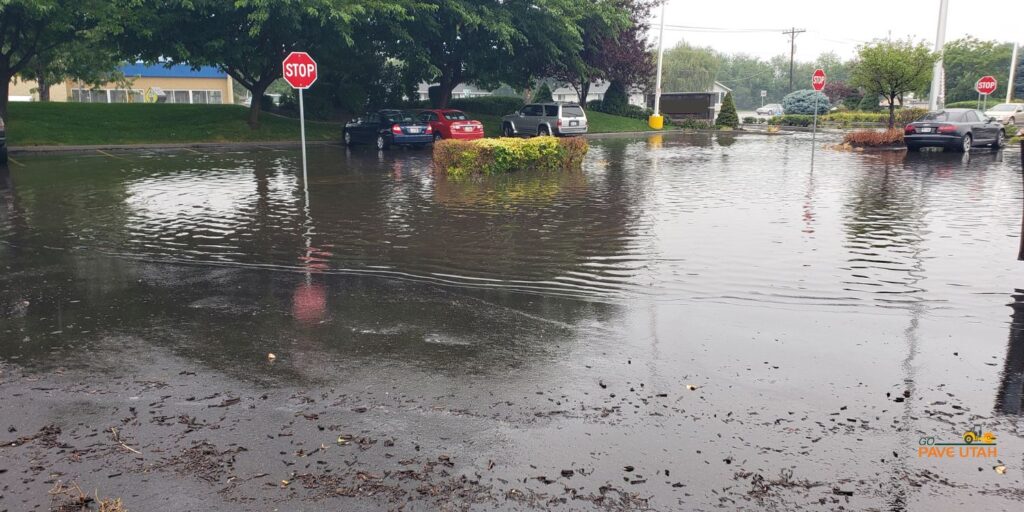
Puddles may be fun for the kids to splash in on rainy days, but they are a nightmare to your asphalt pavements. You never want standing water in your parking lot or driveway, especially if you notice puddles around days after the last rainfall. If you do see puddles after precipitation and they aren’t drying up at a reasonable rate, you need to give us a call for an assessment. To help prevent puddles from forming in the first place, here are some solutions.
Sloped surfaces – A gentle slope is needed for all asphalt surfaces to encourage water to flow off the pavement rather than pooling in the middle. A 1.5% to 3% grade is typically all you need throughout the surface area, and don’t worry, it’s not even noticeable to the naked eye. At the edges of the pavement, a 3% to 6% grade may be needed to encourage full run off of the water.
Avoid overuse of heavy machinery – If a parking lot or driveway wasn’t designed for heavy machinery use yet it’s consistently exposed to massive loads, it will start to show. The extra weight will begin to sink the surface of the lot and create noticeable indentations. When it rains, the water will pool in those indentations and create issues. Sometimes you can even clearly see the individual tire prints of a heavy vehicle if it was parked in one spot for a long time. Water takes the path of least resistance and will flow to the lowest point in your driveway or parking lot. To prevent this from happening, use the pavement for its intended purpose, and if damage has occurred from heavy weight, call us to get it repaired before pooling continues and more damage takes place.
Install appropriate drainage – Even if your lot has been sloped appropriately, you’ll likely need to install drainage systems. Professionals can install drains at strategic locations throughout your lot to encourage water to keep moving off the surface. If pooling is asphalt’s enemy, proper drainage is its best friend.
Sealcoat and repairs – Sealcoating your pavement is a great way to protect from rain and snow. It also protects from UV rays and vehicle fluids. Start the pavement off on the right track with a quality sealcoat, but also keep up on any necessary repairs. Sealcoating is not a one-and-done process. Regardless of how well you take care of your asphalt, there will be a time when damage occurs and repairs will need to take place. Address cracks, dips, and holes quickly to avoid further issues. Get on our maintenance plan so we can pay attention to the lot for you and address any repairs quickly.
Preventing water damage on asphalt surfaces is critical to the lifespan of your pavement. When water seeps in, damage get worse, and if it gets down to the foundations, costly repairs will need to be performed to make the pavement safe and secure again. Deteriorating lots will only get worse over time. If you see puddling in your pavement, contact Go Pave Utah for help.